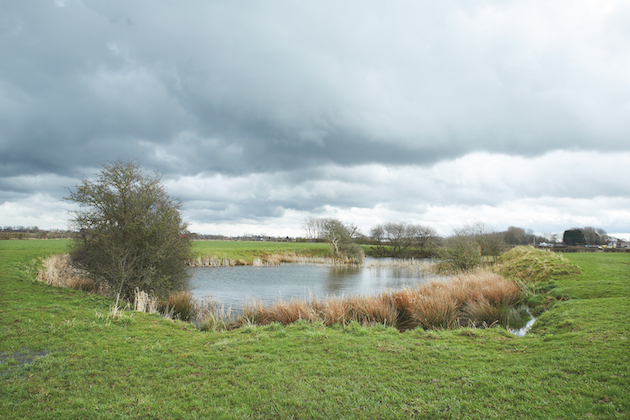Conservation projects to carry out during lockdown
As fewer shoots have taken place this season, this offers a chance to jump ahead with those conservation projects for the close season, says Mike Swan

Restoring an overgrown pond can boost conservation on your shoot and help wildlife thrive
If you are involved in shoot management in any way, do consider the following.
Is there still a decent shrub layer, or has canopy closure started to starve out the sunlight that is so essential to woodland floor habitat? Aside from a few very early starters such as ravens and mistle thrushes, there are two months between now and the start of the breeding season for work in the woods that will not risk disrupting any nesting attempts. So working up a plan now gives you the chance to get going as soon as shooting is over, and perhaps hire some help too.
Bigger-scale works will need felling licences from your relevant forestry authority. There is not much chance that you will manage to get a plan approved for this spring, but there is no reason not to do some coppicing, and even drop one or two larger trees now.
GWCT launches 12 gamebird management principles
Responsible shooters should always support conservation and the Game & Wildlife Conservation Trust (GWCT) has now published 12 clear principles…
Firewood
You are allowed to cut coppice material up to 150cm diameter at breast height without a licence, unless your wood has a designation as an SSSI, where special permission is needed. There is also a ‘firewood’ allowance of proper trees that allows a landowner to fell five cubic metres of timber trees each quarter. These allowances should give considerable scope for lots of good conservation-friendly work in your woods.
This will stimulate ground cover growth and help to hold your game, as well as benefiting a whole suite of woodland songbirds and other wildlife. But if you are unsure of what to do, please always ask for expert guidance. Your local GWCT adviser would be delighted to visit and help you decide what to do, and the fee would surely be a good investment.

Prepare a cull plan to avoid the problem of excess leftover birds
Good heart
If your shoot is one of the many that took the decision to take the season off because of coronavirus, now is a great time to get a jump ahead with some of those jobs that are often reserved for the closed season. Aside from an early start on the aforementioned woodland works, a good look at the cover crop sites is a great idea.
Those who were wise enough to grow something to keep soils in good heart should be thinking what is next, and anyone who did not should take a good look now. Over the past few weeks I have been to a number of shoots where the spring cultivation was carried out then everything went on hold. The result has been some fine stands of weeds that have had the chance to achieve their full flourish. It’s too late now to stop most of them from seeding, but a squirt of glyphosate will at least kill some perennial grasses that could be a problem next season.
Another choice could be to treat the weeds as a green manure, mowing them off and cultivating so they begin to decompose beneath the soil surface. This will then be followed by a green flush that can be sprayed off in early spring, before you prepare a seedbed for next season’s crops.

Restoring an overgrown pond can boost conservation on your shoot and help wildlife thrive
Too many birds?
Many shoots have had their season badly disrupted, with shoot dates lost to lockdown and, as a result, the stock on the ground could well be more than normal for the time of year. So now is the moment to work out what to do about that. Leaving too many birds — especially excessive numbers of cock pheasants — is always a bad idea.
A healthy stock to breed in the wild is one thing, but mobs of spare pheasants are quite another. Squabbling cocks are very disruptive during egg-laying and incubation, and they can reduce wild productivity by pestering your hens. More importantly, however, is the problem of excess leftover birds straying off in the spring to cause damage in gardens and sometimes even farm crops.
Every spring I get a number of calls from irate members of the public who are fed up with pheasants damaging their flowers and vegetables. Leaving too many birds, then not providing properly for them, brings gamekeeping into disrepute, and there is an obligation under the Code of Good Shooting Practice to make sure that you provide sufficient feed for any leftover birds until there is enough natural food for them. This means feeding into May in most situations.
Every shoot should have its conservation project or projects — things done mainly for their own sake, rather than a direct contribution to the shoot’s success. Perhaps there is a dried-out or overgrown pond that could be restored for the dragonflies, frogs and newts. Or maybe an old pit hole full of rubbish that could be cleaned out and properly disposed of, before the hole is planted with native shrubs to provide nest sites for summer migrants.
In these times of increasingly harsh criticism of game management, doing our bit for the environment proves that we really do care about much more than merely the shooting. I have an old friend who likes to start a new project every year, simply to keep life interesting and busy — I think most of us could take a leaf out of that book.









